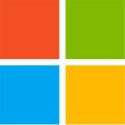
State of Decay 2's PC System Requirements Revealed
State of Decay 2, the sequel to the multi-million selling State of Decay game, will be making its way to the PC and Xbox One on May 22. The Standard Edition will carry a $29.99 price tag and the Ultimate Edition will set you back $49.99. Consumers who purchase the Ultimate Edition will get receive four days of early access beginning May 18 and the "Independence Pack" and "Daybreak Pack" DLCs. Microsoft will also be rewarding consumers who pre-order State of Decay 2 between now and May 21 with some exclusive in-game goodies. State of Decay 2 is a Xbox Play Anywhere title, therefore, consumers will receive both the Xbox One and Windows 10 versions of the game upon purchase. They can access their game saves, achievements, and progression no matter which platform they game on.
in the first place, State of Decay 2 will only work on a Windows 10 64-bit operating system. The game occupies a mere 16 GB of hard drive space. The minimum system requirements include an Intel Core i5-2500 or AMD FX-6300 processor, 8 GB of RAM, and a GeForce GTX 760 or Radeon HD 7870 graphics card. For the more demanding gamers who enjoy maxing out all the eye-candy, Microsoft recommends an Intel Core i5-4570 or AMD FX-8350 processor, 16 GB of RAM, and a GeForce GTX 960 or Radeon R9 380 graphics card.
in the first place, State of Decay 2 will only work on a Windows 10 64-bit operating system. The game occupies a mere 16 GB of hard drive space. The minimum system requirements include an Intel Core i5-2500 or AMD FX-6300 processor, 8 GB of RAM, and a GeForce GTX 760 or Radeon HD 7870 graphics card. For the more demanding gamers who enjoy maxing out all the eye-candy, Microsoft recommends an Intel Core i5-4570 or AMD FX-8350 processor, 16 GB of RAM, and a GeForce GTX 960 or Radeon R9 380 graphics card.




















































